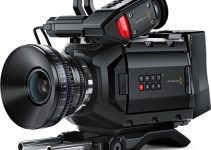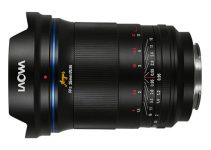In the filmmaking community, especially for those shooting on a budget, filming with a full-frame camera is typically highly demanded considering the visual aesthetics such a tool can produce. Some filmmakers, for instance, tend to believe that the extra pixels that come with a full-frame sensor allow for more pristine and fine-tuned shots.
While the advantages of shooting with a full-frame camera are yearned by many, it doesn’t mean you can’t get cinematic-looking shots with any camera with a smaller sensor size. Achieving a cinematic shot isn’t merely defined by the type of sensor your camera uses, it also includes the lenses you choose, camera positioning, and even in-camera settings.
The following video will try to expel the myth that “the bigger the sensor, the better the shot” by putting two cameras to the test and letting you find out on your own which one is which by spotting the differences between the full-frame camera and the micro four-thirds one.
First and foremost, here is the filmmaking gear used for this particular comparison:
- Cameras: Sony A7S (Full-Frame) and Panasonic GH4 (Micro Four-Thirds)
- Lens: Canon EF 50mm F1.8 (the GH4 uses a Metabones XL Speedbooster in order to use the Canon EF-Mounted lens)
- Controlled Variables: White balance, distance to subject, aperture, ISO (200)
- Note that the shutter speed may have differed between the cameras to achieve similar exposure
Now, take a look at the shots below and see if you can guess which camera is which.
All done? Now for the grand reveal…
Camera A was the Full-Frame Sony A7S while Camera B was the Micro Four-Thirds Panasonic GH4. Looking at the video, there was a very slight difference between the two rivals. The Sony camera had a little bit more detail and sharpness, especially in the darker areas of the frame. On the other hand, the Panasonic camera’s picture quality held up very well although the focal distance did seem a bit closer, which is due to the smaller sensor size.
Overall, both cameras performed extremely well and it just goes to show that you can still get a great cinematic aesthetic in your shots even without a full-frame camera. In this case, size doesn’t matter all the time. Instead, what matters more is how you use the tools that are presently available to you, and working around the problems you may anticipate with your gear.
[source: biscuitsalive]
Disclaimer: As an Amazon Associate partner and participant in B&H and Adorama Affiliate programmes, we earn a small comission from each purchase made through the affiliate links listed above at no additional cost to you.




I agree that sensor size has nothing to do in terms of achieving a cinematic image. It’s all should be narrowed just to aesthetic of lens/sensor combination. With right lens micro 4/3 camera can be more cinematic than full frame camera. Some very good and aesthetically pleasing films were shot on super16. A good example is David Aronofsky Black Swan. If we put skill of an operator or director aside more important things to consider is a colour and structure of the image.
That said video and article above are confusing and simply wrong. When you put Speedbooster XL on micro 4/3 sensor you will have aesthetics similar (1.3x crop) to full frame, so it really proves nothing. Maybe with an exeption that both cameras have similar quality of the image.
The whole point of the video goes to show that both camera could achieve similar visual aesthetics regardless of the sensor size and crop factor. Even without the Speedbooster, the results wouldn’t be that much different in that regard IMHO.
I can’t agree with you. Without speed booster micro 4/3 aesthetics will be much different than full frame aesthetics. Different sensor size with the same lens will give you different look. Even if you compensate with a wider lens on micro 4/3, aesthetic will change, because a comparable field of view will be the same, but lens characteristics will be different.
Example: 50mm on full frame looks different than on micro 4/3, because micro 4/3 uses only centre part of full frame lens circle. And if wider lens is used (25 mm) on micro 4/3 to compensate field of view than the lens aesthetic is different (the distortion is different, space compensation is different, bokeh is different and more).
It doesn’t mean that micro 4/3 is less cinematic than full frame, it’s just not the same.
Of course, they are different. We are talking about the so called “cinematic look”. It could be achieved seamlessly by both sensor sizes. The comparison shows that clearly. That’s why I wrote similar, not the same. Cheers!
The tile is still misleading. You should have compared 3 shots.
50mm 1.8 (canon) on a Full Frame
50mm 1.8 (canon) on m43 with speed booster
25mm 1.8 native lens on the m43 (this is missing from your tests)
And you might include a 25mm 0.95 native lens on the m43 to give an almost identical DOF as the 50mm 1.8 FF native lens.
Agreed, though f/0.9 is fairly exotic (and not available at all in any number of focal lengths for m43). At any given field of view, a FF camera is likely to have lensing options that provide shallower DOF than a m43 camera without a Speebooster-type adapter, given the wide range of ultra-fast FF lenses.
Right now Voightlander makes four m4/3 native f/0.95 lenses…
– 10.5mm f/0.95
– 17.5mm f/0.95
– 25.0mm f/0.95
– 42.5mm f/0.95
And these lenses are very easy to find at larger camera stores. Here in Toronto there are at least two stores in town that have these lenses in stock.
“Even without the Speedbooster, the results wouldn’t be that much different in that regard IMHO.”
Then you clearly do not understand what the Speedbooster is doing. Period.
A very good article!
Thanks @Vlady Radev.
This isn’t complicated. Full frame for the most part is better in low light and certainly makes it easier to achieve shallower DoF. However, a speedbooster, can essentially eliminate that advantage. Shallow DoF does NOT make an image look more “cinematic”. Composition and quality lighting makes something “cinematic”. ANYONE who says otherwise is an amateur, plain and simple. Its just getting old already with this comparison and even older when someone says they NEED full frame. Really? You need full frame? Guess all those people on ARRIs and REDs are suffering with their S35 sensors=) Heck, you don’t even need either of those to make anything Cinematic=)
The main disadvantage of a smaller sensor is it’s tighter field of view and that it’s harder to get a comparable shallow depth of field, and so you slap on a speed booster that solves both of these problems and claim that sensor size make no difference. Well… yeah, not with a speed booster on it…?
Totally agree, and even if you could achieve similar DoF (without speed booster) with some lenses – let’s say 25mm 0.95 and 50 1.4, the look of 25mm and 50mm lens will be different because space compensation will be different. That’s why people use medium formats for photography to get wider field of view with bigger space compensation. DoF in smaller medium formats is similar in most cases (for 6×4,5 format) because medium format lenses are slower.Just for clarification in bigger ones 6×7 or 6×9 – DoF is much shallower of course.
Sloppy, sloppy page-filler. Where to start…?
1: “the extra pixels that come with a full-frame sensor allow for more pristine and fine-tuned shots.” Full-frame sensors do not *necessarily* have more pixels than a smaller sensor. Sometimes they simply have larger photosites. Although a greater number of pixels *can* yield a superior HD image, it entirely depends on how the photosites are processed in-camera to yield an HD image (e.g., pixel binning, pixel skipping, oversampling). While some oversampling can improve an image, once again it depends on the algorithm used — plus beyond a certain amount of oversampling, there’s no perceptual improvement.
2: “While the advantages of shooting with a full-frame camera are yearned by many, it doesn’t mean you can’t get cinematic-looking shots with … a smaller sensor size.” The overhwelming reason DPs prefer a full-frame camera is the shallower depth of field. Yet you have eliminated this advantage by using a Speedbooster on the GH4. Fine–that’s why people use a Speedbooster instead of a simple mount adapter. But you completely fail to explain that the Speedbooster is doing something that a native GH4 lens cannot do. Furthermore, Speedbooster adapters are available only for certain cameras/sensor sizes. On a camera with a 1/3″ sensor, for example, you simply cannot reproduce the look of a full-frame sensor.
3: “…letting you find out on your own which one is which by spotting the differences between the full-frame camera and the micro four-thirds one.” Not exactly. You have rendered your “comparison” utterly useless by choosing two completely different sensors, codecs, camera profiles, etc. There WAS a valid way you could have made this comparison: you could have used two cameras that use different-sized sensor slices of the same sensor wafer, e.g. two RED cameras. Or you could have shot an image with a full-frame camera, then shot it again with an in-camera center crop of the sensor and a wider lens, so the image sizes matched.
4: “…although the focal distance did seem a bit closer, which is due to the smaller sensor size.” NO. It’s due to the fact that the lens in the Speedbooster does not provide a perfect 1:1 size match between the two camera setups. It has absolutely nothing to do with the sensor size per se.
5: “…The Sony camera had a little bit more detail and sharpness” Since you apparently did not shoot resolution charts, you’re completely pulling this comment out of a body part that should not be allowed to speak authoritatively. It’s entirely likely that you were responding to the camera’s differing detail circuitry and processing, which affects *the perception of* sharpness, which is not the same thing as actual sharpness or resolution.
6: I will gladly ignore the utterly random and gratuitous use of “cinematic.”
The more I read this article the more infuriating it is. “Some filmmakers, for instance, tend to believe that the extra pixels that come with a full-frame sensor allow for more pristine and fine-tuned shots.” wtf seriously. Full frame does not give you more pixels. 5D Mk2 is full frame, it shoots sort of crappy 1080p, Red Helium is a bit bigger than S35, it shoots fucking 8K.
If you want to compare, swap out the GH4 with speedbooster with a broadcast camera with a tiny 1/2″ sensor, and give me some ultra wide shallow DoF shots. Go! Or try to get any sort of blurred background without zooming all the way in.
Just so much wrong with this article.
Without the $800 speedbooster, the M43 sensor loses badly. Compare the sensors without any modifiers.
Were talking about investing in either full frame or MFT system. If you use the Canon lens to MFT body then we’re half investing to both systems. Speedboosters are added cost to the MFT and added weight. You should have used native lenses to the MFT camera then compare the systems not just compare the bodies.